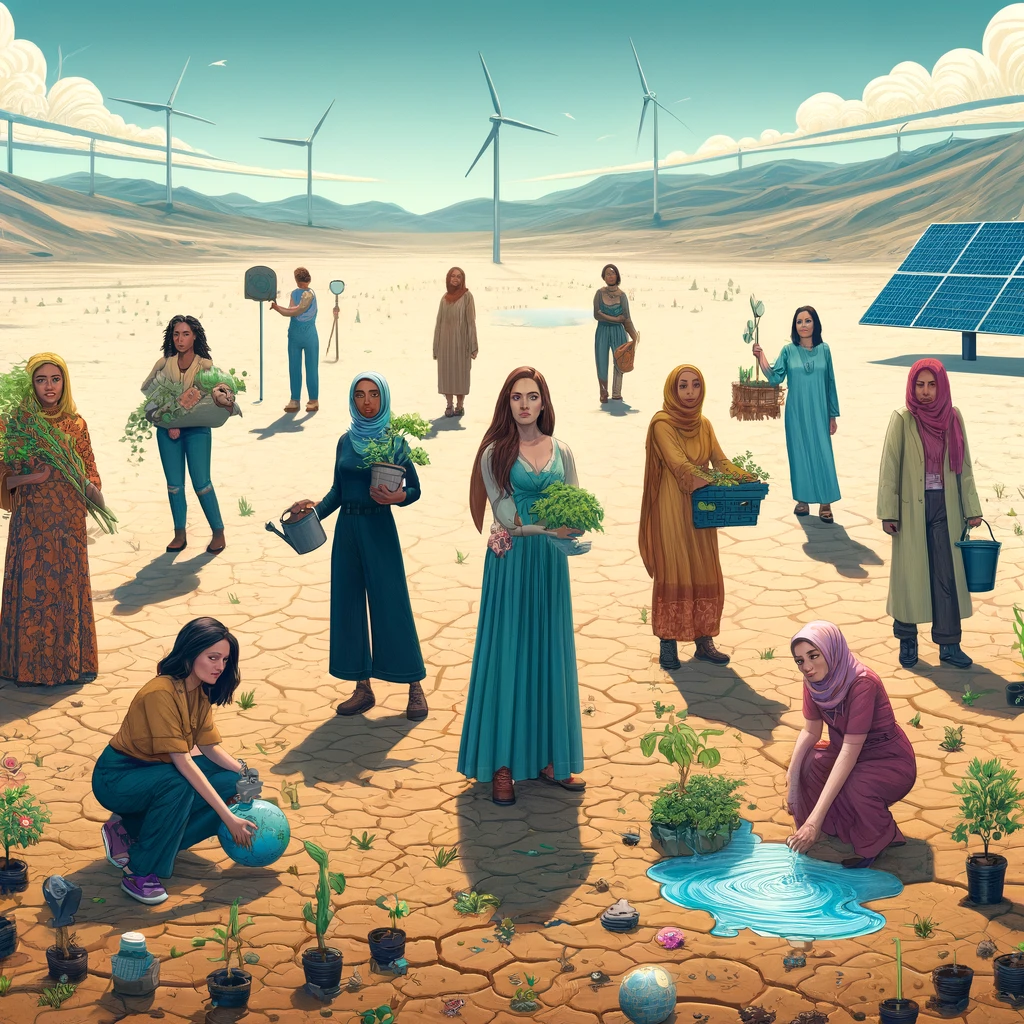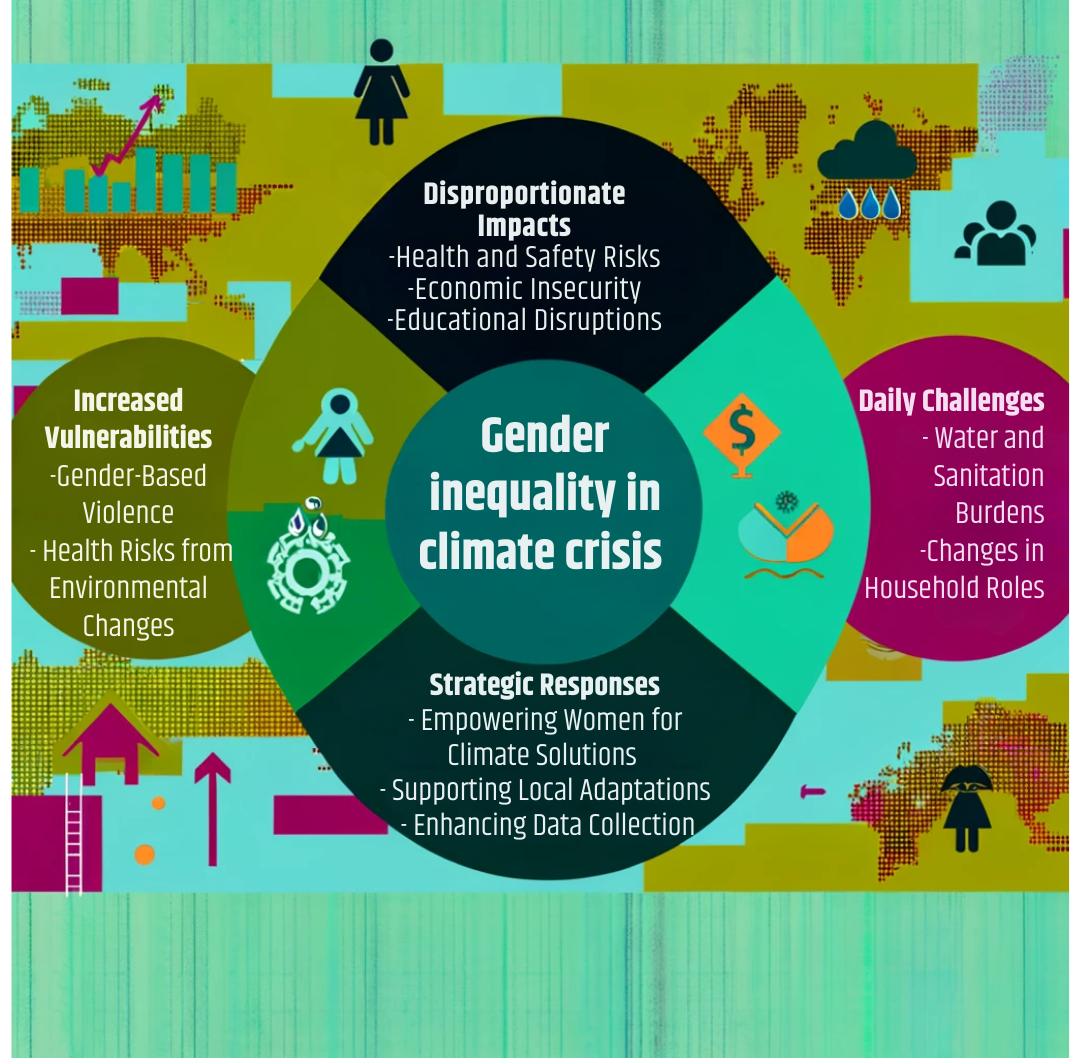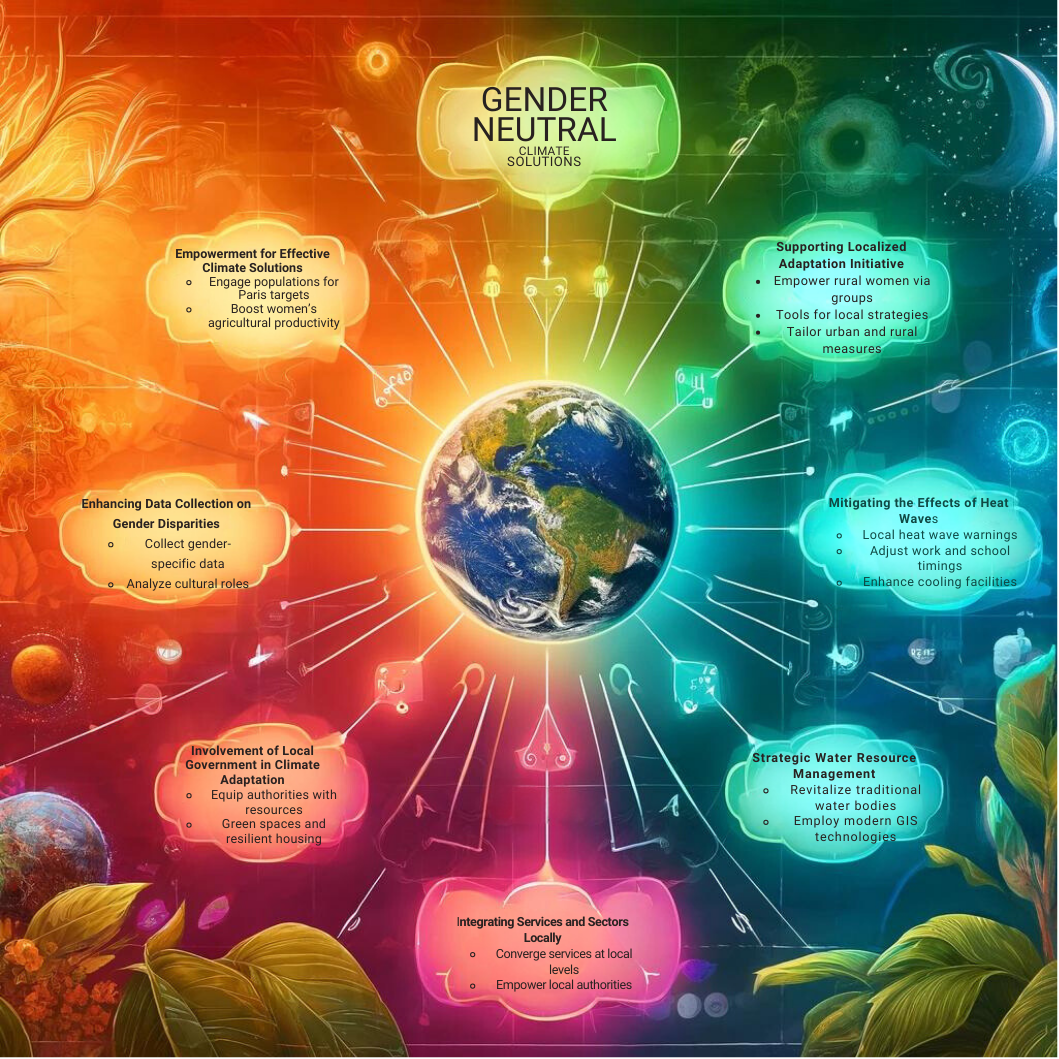It follows that the urgency of the climate crisis, which is, in fact, already in effect, thus unevenly spread and impinges on everybody’s health to an unequal extent. Among others, poor women and girls face especially severe health risks related to their conventional societal roles responsibilities, and cultural norms. For example, as UNDP reports, women and children are 14 times more likely to die in a disaster than men. Recently, the Supreme Court of India held that people have a right to protection against harmful changes in the climate. Hence, we are entitled to the right to an environment free of pollution as a part of the expanded right to life.
| GS Paper | General Studies II |
| Topics for UPSC Prelims | Climate Change, United Nations Development Programme (UNDP), Supreme Court of India, Climate Conference (COP 28), Loss and Damage Fund, Gender-Based Violence, National Family Health Survey (NFHS) 4 and 5, Council on Energy Environment and Water (CEEW). |
| Topics for UPSC Mains | Impact of Climate Change on Women, Addressing Climate Change Patterns Impacting Women. |

Origin of the Article
This editorial draws on insights from the article “The climate crisis is not gender neutral,” published in The Hindu on April 10, 2024. It articulately highlights how the climate crisis has a disproportionate impact on different segments of the population, with a particular focus on the increased vulnerability of women. The discussion emphasizes that effective climate action requires the engagement of all societal segments. Particularly, it argues that empowering women is for devising more effective solutions to combat climate challenges.
Intersection of Climate Change and Women’s Role
Health Impacts
- Women, as primary caregivers and due to biological factors, are more susceptible to health issues from climate effects like heatwaves and severe weather, increasing their exposure to diseases such as malaria and dengue.
- The health of pregnant women and new mothers is especially at risk, with heightened chances of malnutrition and childbirth complications post-disasters.
Economic Security
- Predominantly in rural, developing regions, women rely on agriculture and forestry. These sectors are highly sensitive to climate variations.
- Fluctuating climates, through droughts or floods, hinder agricultural outputs, impacting income stability and increasing food scarcity for women.
Educational Access
- Climate disasters damage educational infrastructure and prompt school closures, disproportionately pulling girls out of education due to safety or added family duties.
Water and Sanitation
- Women and girls typically manage household water needs, facing increased burdens when climate change causes water shortages or pollution.
- Lack of clean water and sanitation not only complicates daily life but also elevates health risks for women, affecting hygiene and increasing maternal mortality rates.

Climate Change and Its Varied Impact on Women
Gender-Based Violence Triggered by Climate Events
- Research by the Council on Energy, Environment, and Water (CEEW) in 2021 indicated that 75% of Indian districts are prone to climate disasters like floods and cyclones, putting women and children at high risk. These conditions often correlate with increased gender-based violence.
- In regions like Colombia, Mali, and Yemen, which suffer from both conflict and severe climate events, women and girls face heightened vulnerability to gender-based violence.
Heat Waves and Health Risks
- Record-breaking heat over the past decade poses significant health risks, especially endangering pregnant women with complications such as preterm births.
- Air pollution, caused by heat waves, significantly affects women’s health, leading to respiratory and cardiovascular issues, and adversely impacting fetal development.
Child Marriage as a Climate Coping Strategy
- In response to climate disasters, families in places like Bangladesh and Ethiopia sometimes resort to child marriage as a financial strategy.
- Girls are often pulled out of school to assist with household duties during crisis, setting back progress on gender equality.
Escalated Daily Burdens
- Climate-related extreme weather complicates daily tasks for women, such as gathering firewood and water, forcing them to travel further, thus impacting their education and family roles.
- These increased burdens are a factor in why some girls are forced to discontinue their education.
Shifts in Household Roles Due to Migration
- Climate impacts often cause men to migrate from rural to urban areas for work, leaving women to manage both land and household, increasing their workload and decreasing their income.
- This shift places additional responsibilities on women, who are already constrained by gender norms limiting land ownership and economic opportunities.
Reduced Adaptive Capacity
- Women’s exclusion from the formal economy and decision-making processes diminishes their ability to adapt to climate changes, as highlighted in regions like Antigua and Barbuda.
- Informal employment, common among women, lacks robust health and safety protections, heightening their vulnerability during climate disasters.
Impact on Women in Agriculture
- Climate change affects women’s roles in agriculture, with extreme weather and altered rainfall patterns disrupting crop yields and food security.
- Economic challenges for women in agriculture are intensified by climate impacts, which damage crops and infrastructure, leading to increased domestic burdens and economic instability.
- Lack of access to resources such as land and credit leaves women particularly vulnerable to the economic shocks of climate events.
Strategies for Gender-Neutral Climate Action

Empowerment for Effective Climate Solutions
Achieving the Paris Agreement’s temperature control targets necessitates the engagement of the entire population. Empowering women, who when given equal resources can increase agricultural yields by 20–30%, is essential for developing robust climate solutions.
Supporting Localized Adaptation Initiatives
Empowering rural and tribal women through Self-help Groups and Farmer Producer Organizations with the necessary tools and resources can foster local, effective climate adaptation strategies. Such measures need to be tailored distinctly for rural and urban contexts.
Enhancing Data Collection on Gender Inequality
Collecting sex-disaggregate data is vital for understanding and harnessing the potential of women in diverse roles as change agents. This requires moving beyond generic data to capture the nuanced roles of women and men in different cultural contexts.
Mitigating the Effects of Heat Waves
Strategies to lessen the impacts of heat waves should include issuing localized heat wave warnings, altering work and school schedules, and improving facilities with cooling rooms and adequate water supplies. These measures can help reduce heat-related mortality and economic losses.
Involvement of Local Government in Climate Adaptation
Urban and local authorities should be equipped with plans and resources to implement climate adaptation measures effectively. Initiatives like increasing green spaces and improving housing to withstand climate impacts are essential long-term strategies.
Strategic Water Resource Management
Addressing water scarcity requires mapping and revitalizing traditional water systems like ponds and canals using modern technologies such as geographic information systems to improve water access and resilience.
Integrating Services and Sectors Locally
Effective convergence of services and prioritization of actions are most achievable at local levels like villages and panchayats. Empowering local bodies with the necessary authority and resources is essential for community-led resilience.
Revising Climate Action Plans with a Gender Perspective
Revising the National Action Plan (NAPCC) and State Action Plan (SAPCC) on Climate Change to reflect gender dynamics accurately can help in developing more inclusive and effective climate strategies.
Conclusion
The issues of gender equality and climate justice are so interlinked that any approach toward the climate crisis needs to aim for being gender-neutral. The response needs recognition of differential impacts, vulnerabilities, and adaptive capacities of diverse groups of genders for the necessary building of resilient and inclusive communities.
Gender-inclusive strategies are indispensable in climate action plans as we implement our roadmap to sustainability. This is an opportunity to finally create, together, a sound framework of climate resilience, social justice, and environmental stewardship for current and future generations.
| UPSC Civil Services Examination, Previous Year Questions (PYQs) Mains Q. Discuss the positive and negative effects of globalization on women in India. (GS Paper I, 2015) Q. Examine the link between climate disasters and an increase in gender-based violence. Use data from the National Family Health Surveys (NFHS) and reports by bodies like the United Nations Development Programme (UNDP) to support your analysis. What steps can be taken to mitigate the effects of climate change on women’s safety and security? |


